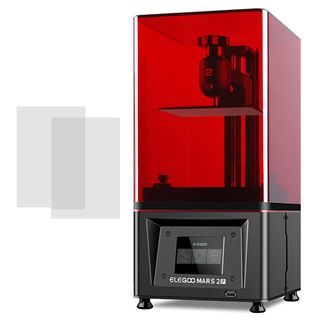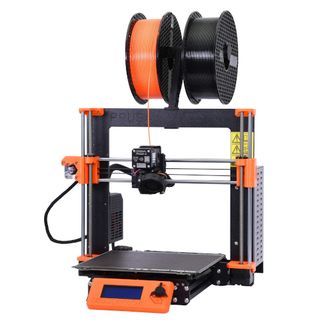Best 3D printers 2023: FDM & resin printers
Until we make replicators, these are the best 3D printers for engineers, hobbyists, miniature gamers, and cosplayers.
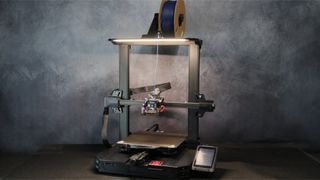
- Quick list
- Best resin printer
- Best FDM for beginners
- Best for miniatures & jewelry
- Best large FDM
- Best cheap resin
- Best cheap FDM
- Best large resin
- Best value resin
- Best fast FDM
- Best customizable FDM
- Best for discounts
- What are FDM 3D printers?
- What are resin 3D printers?
- Free sci-fi 3D prints
- How we test
When it comes to choosing the best 3D printer, there’s a lot more options available on the market than there used to be. There are loads of companies out there making excellent 3D printers - both resin and FDM. It’s an exciting time for 3D printing as it becomes ever more affordable and user-friendly.
For our list, we’re looking at both FDM and resin printers. FDM is the most widely used 3D printer technology whilst resin-based printers are for SLA, MSLA, and DLP devices. More below on the basics of each and differences between the two, so you can pick which type is right for you.
Whilst you can source 3D printing ideas online, you can also come up with your own and let your creativity run wild - from modeling toys or costumes or even solutions for missing parts around your house.
Whatever you’re after, our list of the best 3D printers of 2023 will be sure to provide you with an option to suit your needs. We’ve tried-and-tested the printers below, so you don’t have to. Plus, once you’ve found something you like but you fancy searching for a more budget-friendly price, we’ve got our 3D printers deals guide to secure your tech at a discount price.
The Quick List
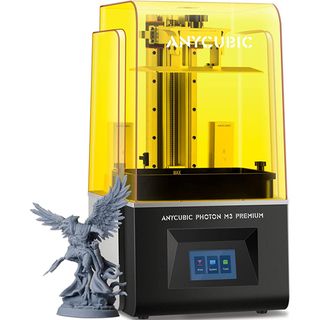
Best resin 3D printer overall
The Anycubic Photon M3 Premium is a great all-rounder capable of large and small-scale prints at exceptional levels of detail.
Read more below.
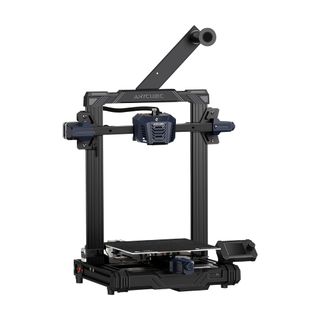
Best FDM 3D printer for beginners
The ideal 3D printer for beginners with a competitive price point that gets you set up and printing without too much hassle.
Read more below.
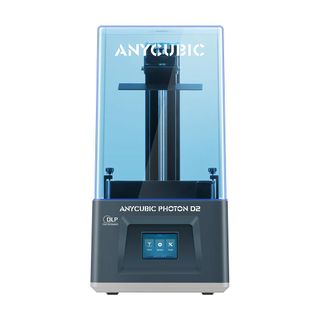
Best resin 3D printer for miniatures & jewelry
For the smaller build specialists like jewelry makers and miniature gamers, the Anycubic Photon D2 goes into incredible detail and is easy to use.
Read more below.
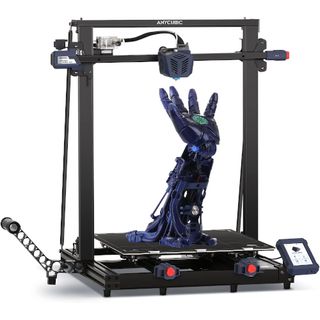
Best large FDM 3D printer
Go big or go home. This large-scale FDM pick makes massive printing projects possible with huge capacity and auto bed levelling.
Read more below.
Load the next 5 products...
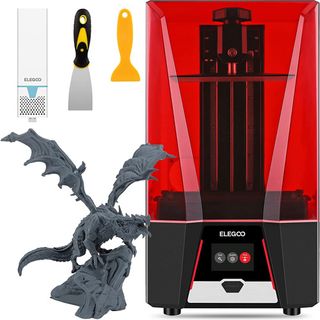
Best large resin 3D printer
A step-up from the Saturn, this 8K MSLA printer is a great choice for a larger build plate and built-in air purification.
Read more below.

Best value resin 3D printer
Looking for your first resin printer? The Anycubic Photon M3 is value for money and easy to set up.
Read more below.
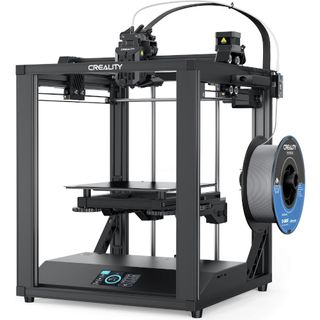
Best fast FDM 3D printer
Want 3D printing super fast? The Ender 5 S1 prints quickly and can handle a wide range of materials thanks to the 300 degree nozzle temperature.
Read more below.
Best resin 3D printer overall

Specifications
Reasons to buy
Reasons to avoid
The Anycubic Photon M3 Premium was rated as the best resin 3D printer we tested. It's the sharpest, clearest resin printer that we’ve ever used thanks to the 8K LCD and new Anycubic Lighturbo 2.0 system. With its large print volume, built-in dual air purifiers, Fast printing speeds and large resin tank, the Photon M3 Premium is a must-have.
Unfortunately the WIFI functionality was not ready during testing but should be available in early 2023. The Anycubic Photon M3 Premium is an excellent choice for your next 3D printer, whether you're printing full-sized models or tabletop miniature gaming pieces.
- Read our full Anycubic Photon M3 Premium review.
Best FDM 3D printer for beginners

Specifications
Reasons to buy
Reasons to avoid
The Anycubic Kobra Neo is the undisputed best 3d printer for beginners. It has an easy assembly process and Anycubic Leviq auto bed leveling, reducing the stress and hassle required to get it set up and printing. You can be printing in no time with just 10 minutes of assembly.
It also has a direct drive extruder for better filament control, which is rare at this price point. It's ideal for printing difficult flexible filaments, which can be a nightmare with traditional Bowden tube setups. If you’re looking to get into 3D printing and need a smooth entry point, the Anycubic Kobra Neo is the one for you.
- Read our full Anycubic Kobra Neo review.
Best resin 3D printer for miniatures & jewelry
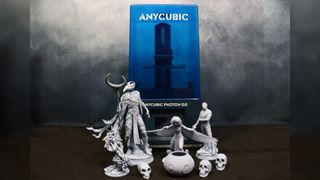
Specifications
Reasons to buy
Reasons to avoid
The Photon D2 DLP resin printer was released as part of Anycubic's 7th anniversary celebration and what a machine it is. The Photon D2 employs a 2K DLP projector, which, when combined with Anycubic's new dual algorithm AA, produces stunning prints. DLP printers produce much smoother and more detailed prints than conventional MSLA printers, despite the lower resolution on paper, thanks to the projector technology they use to cure the prints.
The Photon D2 is a slightly more niche printer aimed more at jewelry makers and miniature gamers, and it ranks lower on the list due to its price and size, as well as the Photon M3 Premium being $40 less expensive. This is not to say that the Photon D2 is not a capable printer; on the contrary, if detail is important in your work, the Photon D2 is unbeatable.
- Red our full Anycubic Photon D2 review.
Best large FDM 3D printer

Specifications
Reasons to buy
Reasons to avoid
Fancy printing your own Storm Trooper helmet? FDM printers are typically larger than their resin counterparts, but to say the Anycubic Kobra Max is ‘big’ would be an understatement. This large-scale machine is capable or producing massive prints that would previously need to be cut up and printed in segments, which means you can create a full adult-sized mask or helmet in just one print session.
The Kobra max even includes the same automatic bed levelling as seen on its smaller cousin, the Anycubic Vyper, which makes this behemoth easy to use without any prior experience. Our only complaint is that it can accommodate larger nozzles but doesn’t ship with any, so you’ll need to purchase these separately if you want to shave some time off your prints.
If you don't want something quite this big, you can also check out the smaller models in the Kobra range: the Anycubic Kobra Plus and Kobra.
- Read our full Anycubic Kobra Max review.
Best cheap resin 3D printer
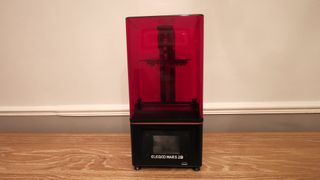
Specifications
Reasons to buy
Reasons to avoid
Size isn’t everything, and the compact Elegoo Mars 2 Pro proves it. This printer is on the small side compared to the other offerings on this list, but that’s a great benefit to those of you who don’t have a lot of spare counter or table space at home, but still want to jump into the world of 3D printing.
It’s also affordable and comes with some great features that make it well suited to people who lack experience using these kinds of machines, such as a built-in air filter to remove most of that nasty resin smell and dangerous fumes, though we do find the choice to side-mount the resin tank to be cumbersome when compared to top-down alternatives.
- Read our full Elegoo Mars Pro 2 review.
Best cheap FDM 3D printer

Specifications
Reasons to buy
Reasons to avoid
There are several options for a low-cost FDM printer, but the Anycubic Kobra Go takes the top spot for us. The Kobra Go is a solid choice if you are on a budget and want to take your first steps into the world of 3D printing. It has amazing out-of-the-box print quality. It also comes with auto-leveling and very little calibration is required. All of that at a staggeringly low price point. So, what’s the catch? Well, you have to build it yourself.
Don't let the fact that the Kobra Go is a self-assemble printer put you off though; thanks to the simple assembly instructions, you can be printing in 30 minutes to an hour. Whether you’re a newbie or a seasoned vet looking to expand your printer lineup, the Kobra Go is a fantastic option.
- Read our full Anycubic Kobra Go review.
Best large resin 3D printer

7. Elegoo Saturn 2
Our expert review:
Specifications
Reasons to buy
Reasons to avoid
If you are looking for a printer with a little more space, Elegoo has other planetary -inspired offerings available. The Elegoo Saturn 2 is an upgrade to the Saturn we have reviewed before albeit with a 8K LCD upgrade from the 4K offered in the previous Saturn model. Elegoo has also upgraded the build plate volume of 219 x 123 x 210 mm, 22.7% larger than the Saturn.
With a price tag only $10 more then the original Elegoo Saturn, you can’t go wrong choosing the Elegoo Saturn 2. It is one of the more affordable larger volume 8K MSLA printers on the market and well worth your time and money.
Best value resin 3D printer
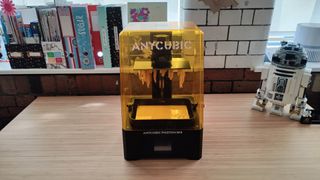
Specifications
Reasons to buy
Reasons to avoid
The Anycubic Photon M3 is the entry-level model in the M3 resin printer line, and it is slightly larger than the Photon mono 4K. With its low price, this is an excellent choice for a first resin printer. When combined with the printer's eye-catching design and an extremely simple setup process, you don't need to be an experienced maker to enjoy using it.
The Photon M3's only flaw is the clumsy Photon Workshop slicer; fortunately, the Photon M3 is supported by Chutubox and Lychee Slicer, making the Photon M3's one real flaw a non-issue for users. You can’t go wrong with the Photon M3 if it is in your budget range.
- Read our full Anycubic Photon M3 review.
Best fast FDM 3D printer
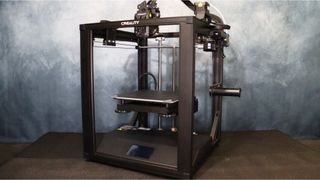
Specifications
Reasons to buy
Reasons to avoid
With average speeds of 120 mm/s and a top speed of 250 mm/s, the Creality Ender 5 S1 is the fastest printer on our list. If you need your prints done quickly, this is the FDM 3D printer for you.
The Ender 5 S1 is an all-metal cube design with a classic Cartesian structure; however, unlike the other FDM 3D printers on our list, the printing platform moves up and down rather than front to back. It also has an all-metal hot end capable of reaching 300 degrees; this combination results in incredible stability and attainable print speeds without sacrificing quality, and with the optional Creality Sonic pad and coming future support, the Ender 5 S1 will only get faster in the future once klipper support is added.
Creality also provides an optional acrylic enclosure, making it ideal for difficult materials that require a controlled environment.
- Read our full Creality Ender 5 S1 review.
Best customizable FDM 3D printer
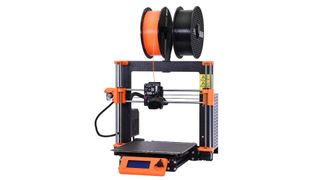
10. Prusa i3 MK3S+
Our expert review:
Specifications
Reasons to buy
Reasons to avoid
Prusa is arguably one of the most recognizable brands on the market, and that's for good reason. This printer has a large online following thanks to its open-source hardware and firmware, so if there’s something you want to tinker with then you’ll find plenty of support, and its massive online presence means you’ll have plenty of resources to help you grow your hobby and improve your skills.
The Prusa i3 MK3S+ is available as either a pre-built printer or a DIY kit for those who want to assemble the unit themselves (and save some cash in the process). Results are high-quality, consistent and the machine is easy to use with plenty of resources available. The build volume is on the smaller side, but you can easily learn to cut your larger models into sections to print.
Best discounted resin 3D printer

Specifications
Reasons to buy
Reasons to avoid
The Anycubic Photon Mono X 6K offers a huge build plate, while the 6K screen ensures there is no loss in print quality as we scale up, solving one of the biggest issues with resin-based printers - they usually sacrifice size for detail. The high resolution and large build plate means that users can print extremely detailed figures at a bigger scale, making it ideal for larger figurines, cosplay props and prototyping.
One of the few criticisms we had was the noise as the Anycubic Photon Mono X 6K uses some pretty big fans to keep the machine running at an optimal temperature, but it’s not recommended that you remain in the same room while resin printers are in use anyway, so behind a closed-door you’ll only hear a muffled whirring.
- Read our full Anycubic Photon Mono X 6K review.
What are FDM 3D printers?
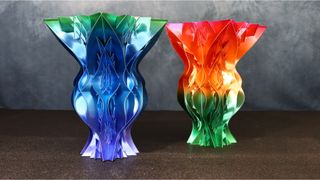
FDM stands for ‘Fused deposition modeling’ and is the most recognizable style of 3D printing. A motor moves a nozzle that squeezes melted filament onto a heated bed to form a shape, which is useful for folks who don’t need to worry about tiny details (as layer lines are usually visible on the finished print), but instead value size. There are two main types of FDM printer: Bowden and direct drive.
Bowden tube printers use an extruder motor and rotating gear setup to push filament down a tube to the hot end, which is mounted on the X-axis gantry. Direct drive printers us extruder setup mounted directly on the hot end, eliminating the tube and long travel path. The main advantage of the direct drive system is that it requires less retraction and allows you to successfully print softer materials.
This isn't to say that Bowden setups aren't good; you can get equally great print quality and use just as many filament types, but they require more tuning to dial in the quality than direct drive setups.
Whichever type of FDM printer you choose, they're fantastic for prop creation and household objects like vases as you can create much larger models than a printer that uses resin instead of a spool of filament.
Filament also comes in a variety of different materials, from standard ABS plastic and PLA (polylactic acid), up to flexible foam and sturdy carbon fiber, which makes FDM printers that can use these more niche filaments well suited for prototyping.
What are resin 3D printers?

As the name suggests, resin printers instead use a vat of UV reactive liquid resin that cures in layers to bring your ideas to life. You will have much faster print times with resin than with FDM because the entire layer is exposed at once. Layer height, which can be as low as 0.01mm, and model height are the two most important factors in resin print time. A simple print with 0.01 mm layers can result in tens of thousands of layers.
There are several styles of resin curing technology used, such as SLA (Stereolithography), MSLA (Masked Stereolithography) and DLP (Digital Light Process).
All of these methods can be messy and even dangerous as resin gives off toxic fumes, but the level of detail achieved is impossible to replicate on an FDM printer. While newer resin printers include air filtration, you should always keep the printer in a well-ventilated room regardless, which is something to consider when purchasing your next 3D printer.
Models created on a resin printer are often also much smaller given you’re restricted by the size of your resin tank and submerged build plate, so this is better for people who want to create jewelry masters, tabletop miniatures and other small, detailed figurines.
Free sci-fi 3D prints

We've put together several guides to our favorite 3D print files out there, with a particular focus on space and sci-fi models. We've also got some advice for tabletop wargamers who want to save some cash too:
How we test
The 3D printers featured in this list have been tested and categorized, weighing up the reasons to buy and reasons to avoid for each. All testing is performed by physically trialing each printer with different printing projects, relevant to printer type (FDM & resin). Individual printers are gauged on a variety of relevant points such as print quality, speed, build plate size, ease-of-use, and reliability.
All 3D printers are built, calibrated, and then run through a series of test prints. Each one is given reasonable time during the testing phase to determine its position on our list. Specifications, cost, and design are also part of our review process and are explored in each section. Each printer has also been given a best-in-class attribution which signifies why it is a standout 3D printing product.
They have each been given a rating out of five stars based on all the aforementioned specifications that have been trialed in relevant 3D printing tests from miniature figurines, to costumes, to the usual 3D tests that assess how well they cope with extremes. An important part of the process was ensuring these tests were carried out from a consumer’s perspective before including it in our best 3D printers of 2023 list.
If we haven’t had a chance to test a 3D printer ourselves yet, but we still think it should be mentioned on the list, we’ll include it but make it clear. We endeavor to test everything we recommend eventually, but we also think it's also important to let you know what all the options are.
Join our Space Forums to keep talking space on the latest missions, night sky and more! And if you have a news tip, correction or comment, let us know at: community@space.com.
Get the Space.com Newsletter
Breaking space news, the latest updates on rocket launches, skywatching events and more!
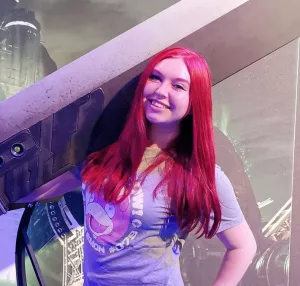
Jess is a freelance writer for Space.com, and also serves as TechRadar's Computing writer (@Zombie_Wretch on Twitter), where she covers all aspects of Mac and PC hardware, including PC gaming and peripherals. She has been interviewed as an industry expert for the BBC, and while her educational background was in prosthetics and model-making, her true love is in tech and she has built numerous desktop computers over the last 10 years for gaming and content creation. She also likes to dabble in digital art and 3D printing, and can often be found playing games of both the Video and Tabletop variety, occasionally streaming to the disappointment of everyone.
- Will ZoobkoffFreelance contributor
- Grace DeanContributing Writer
